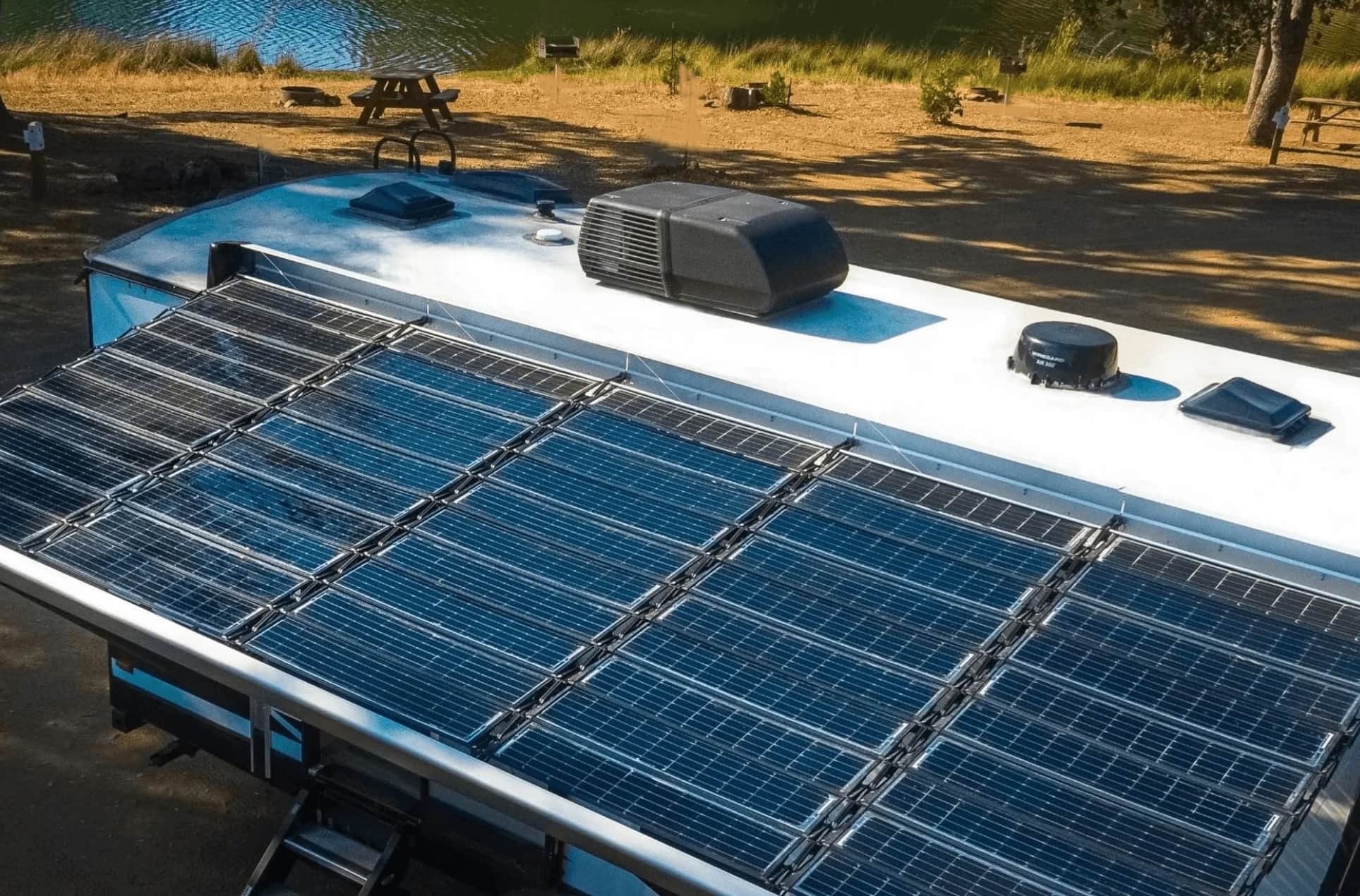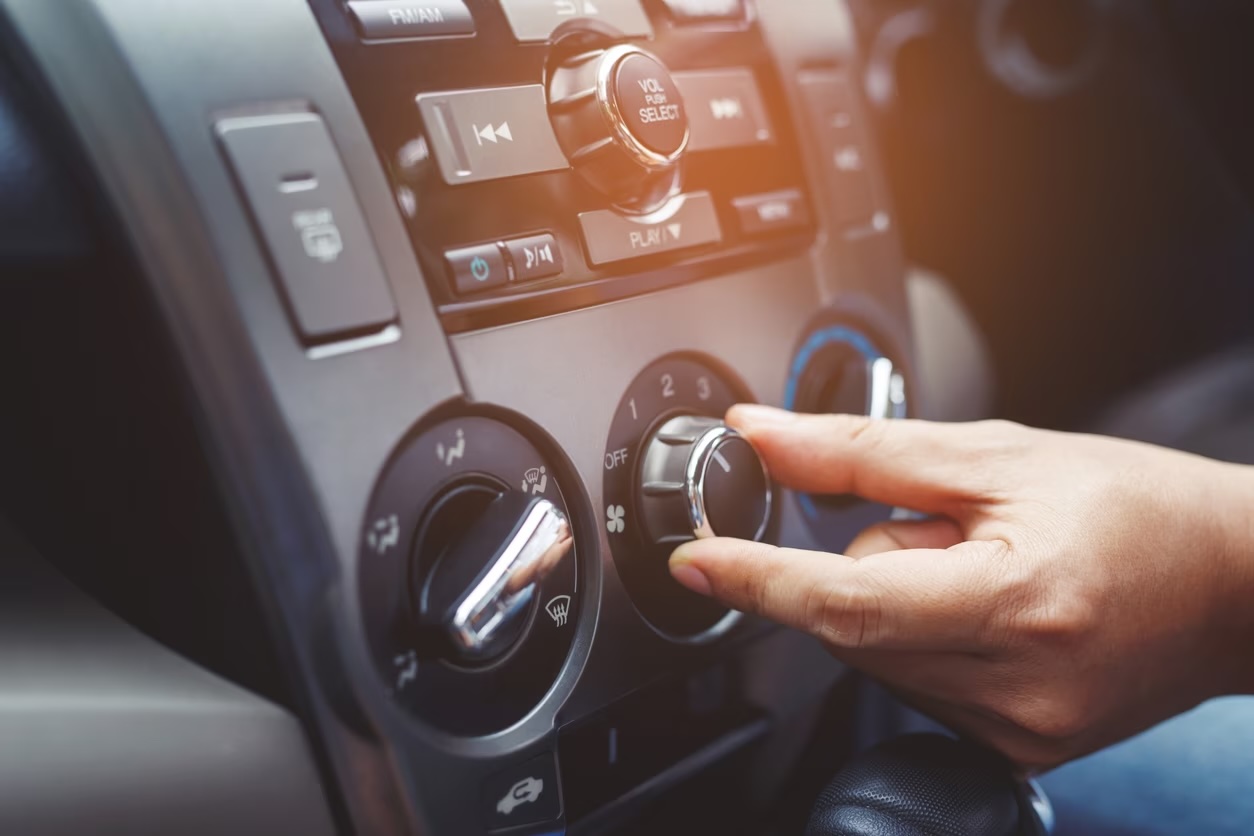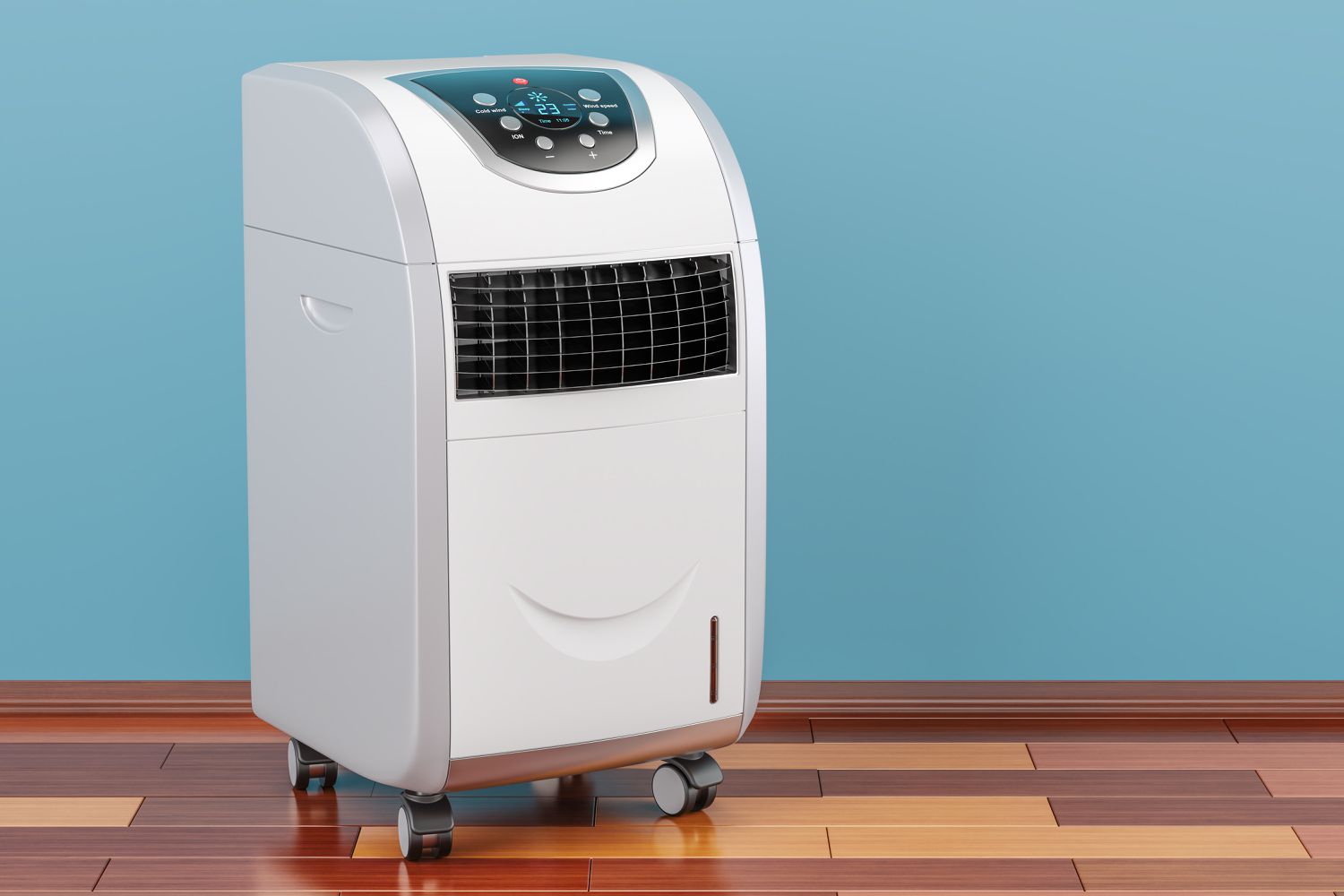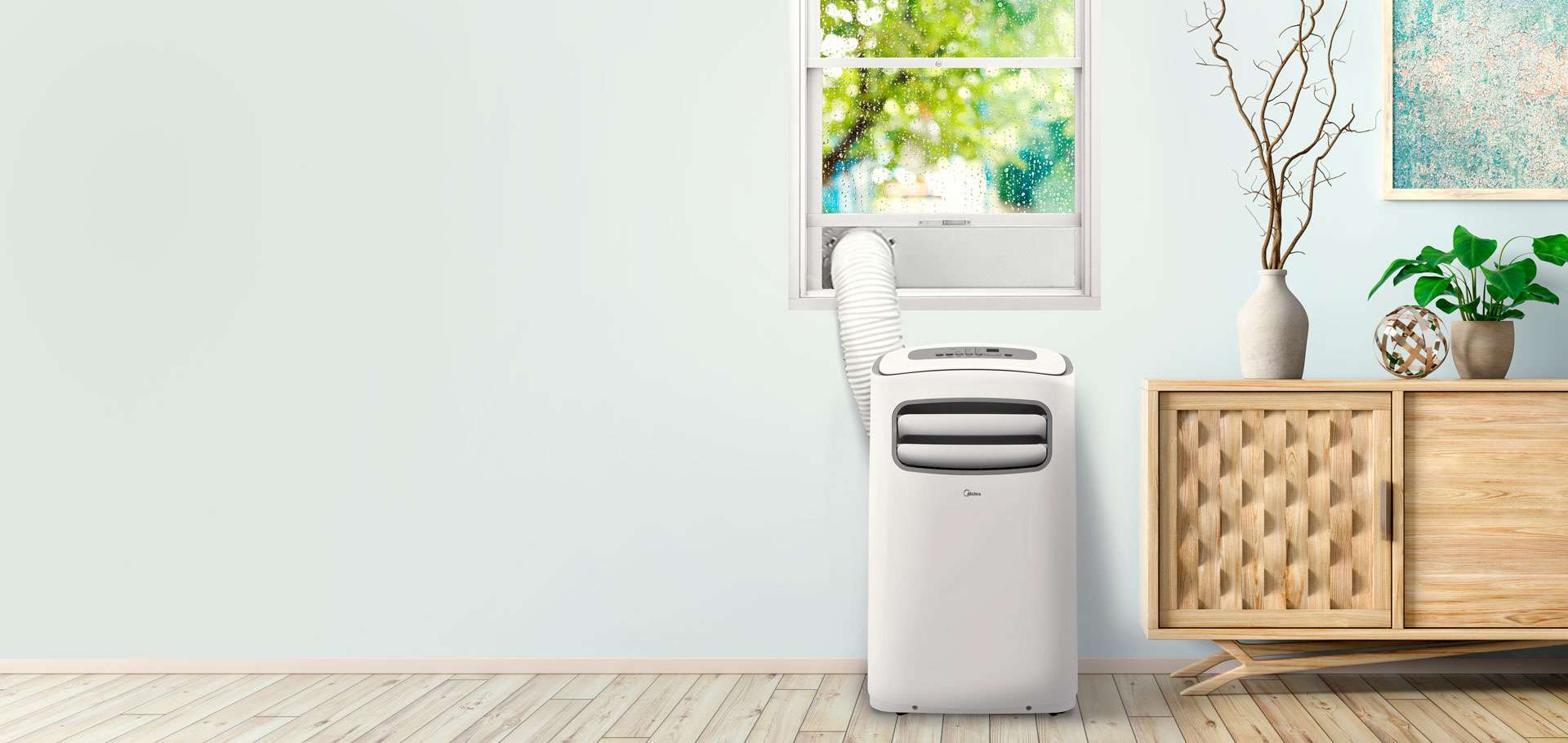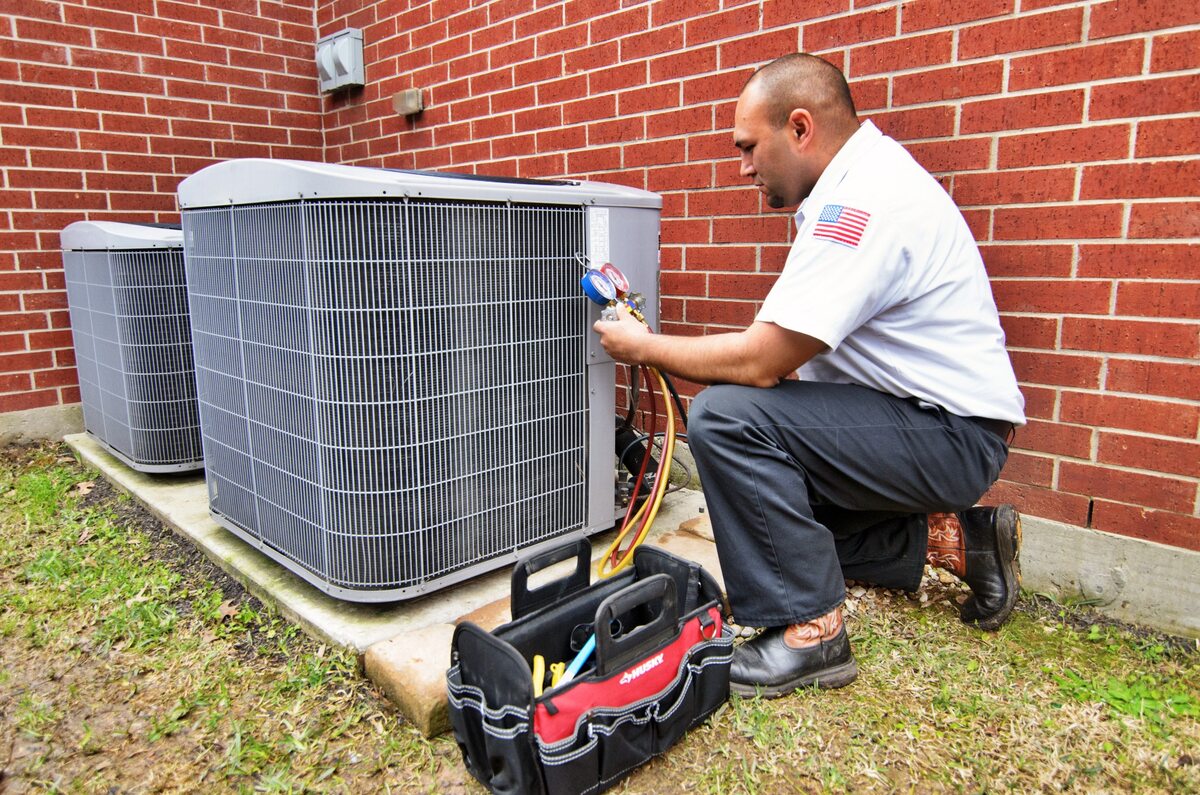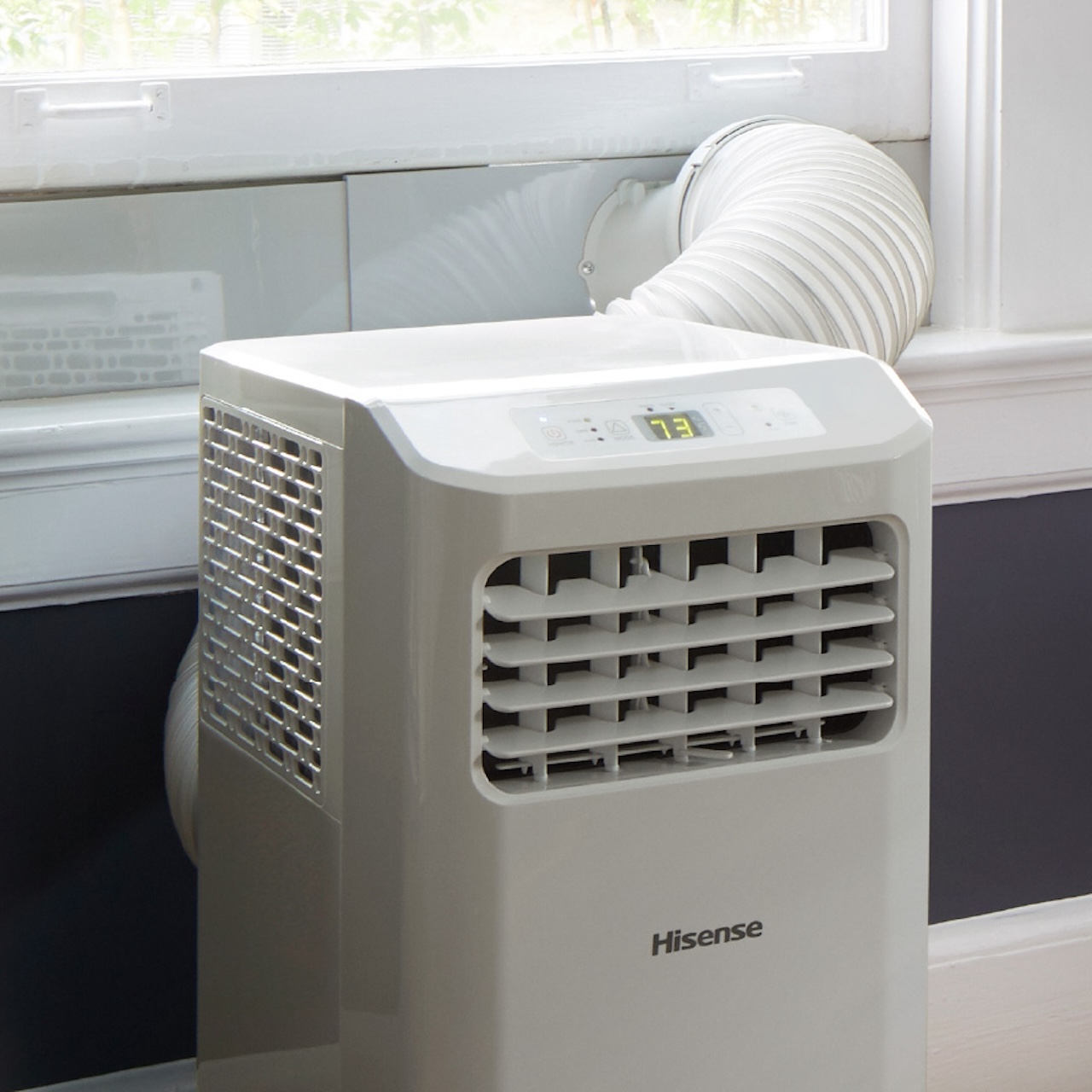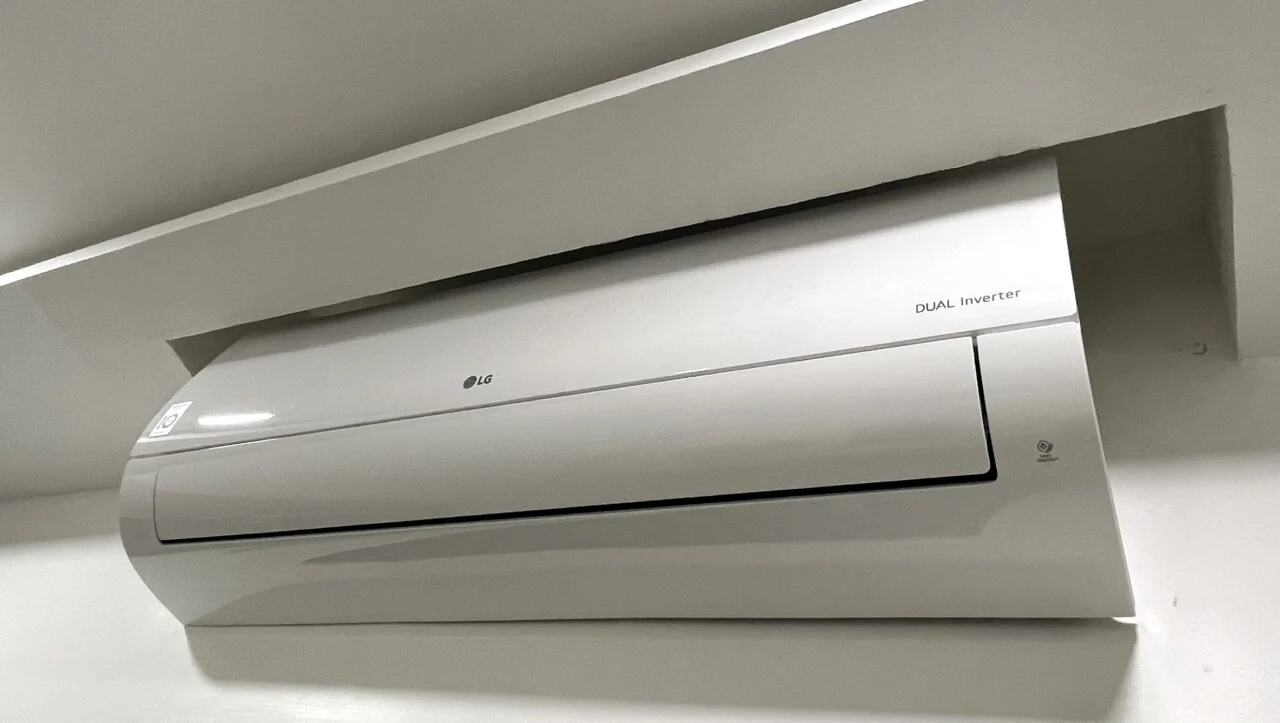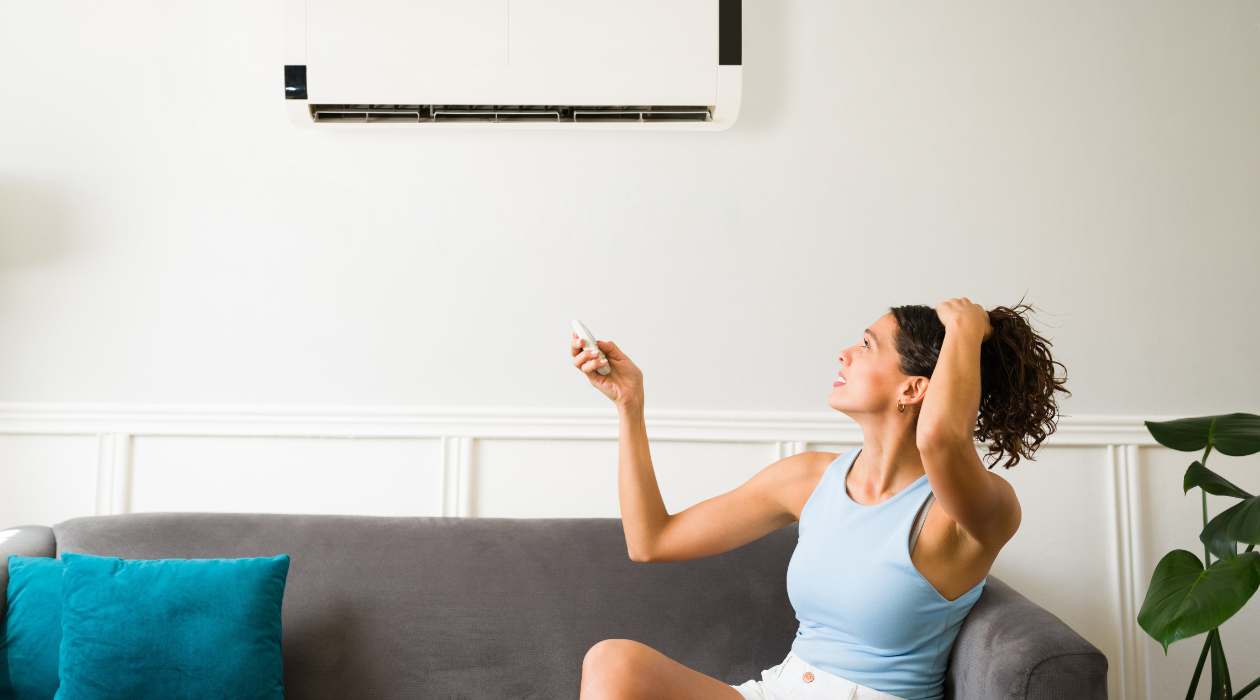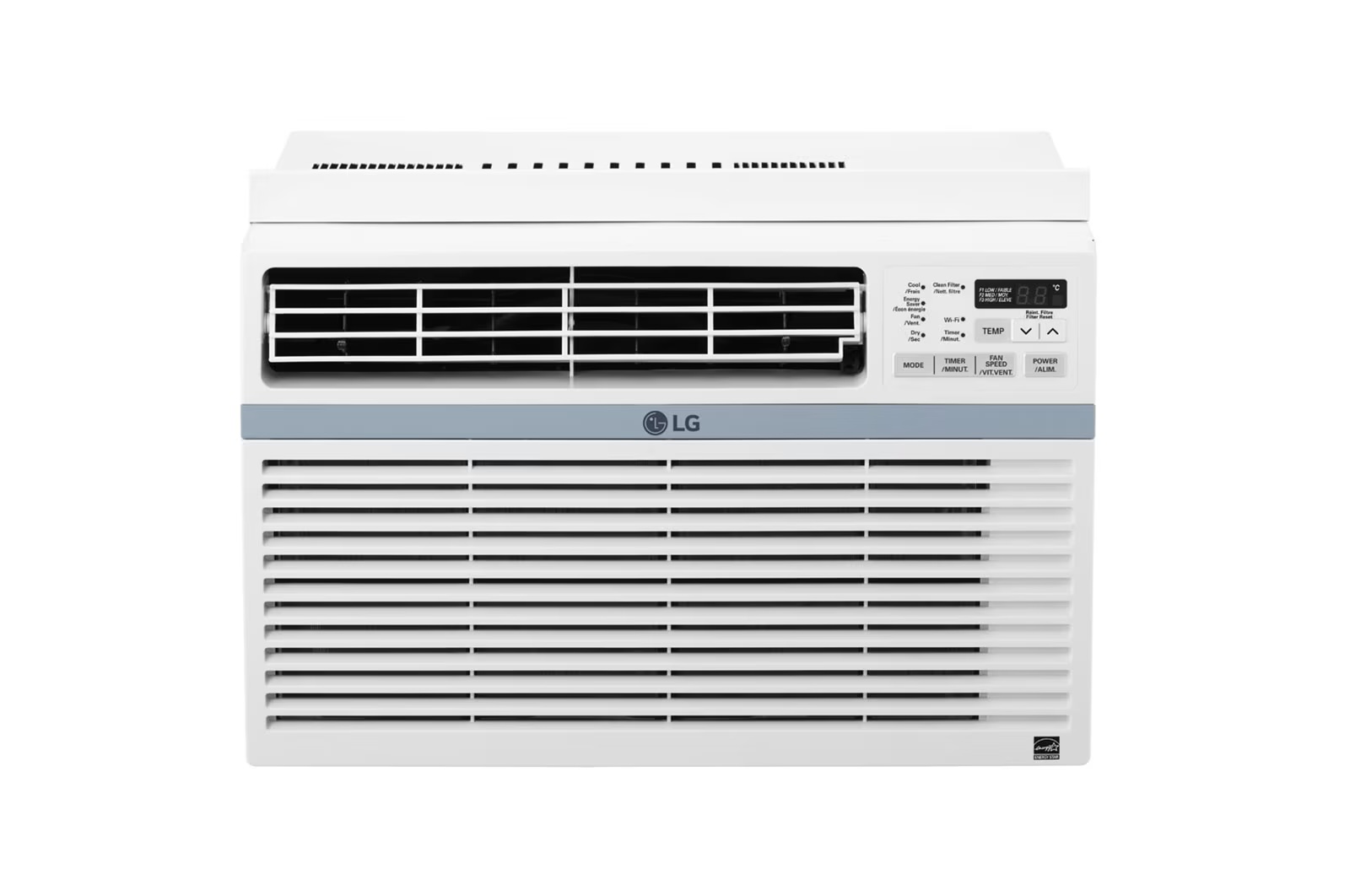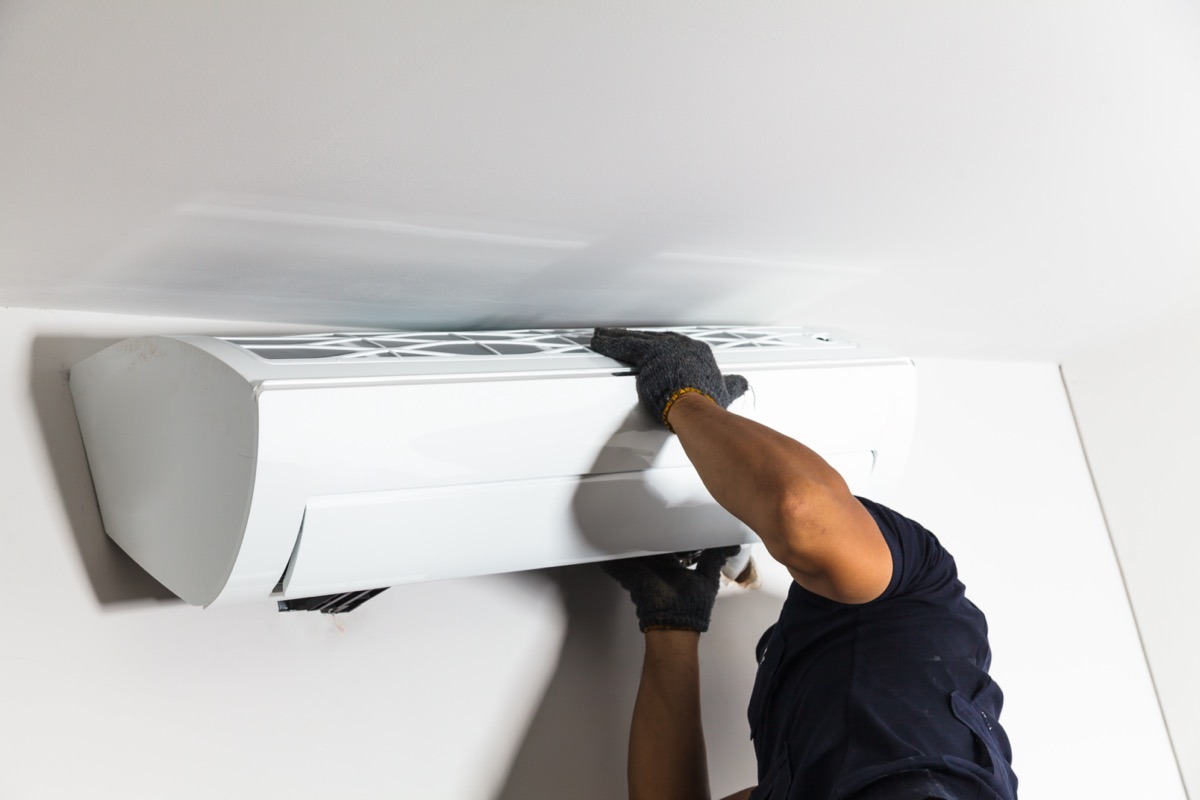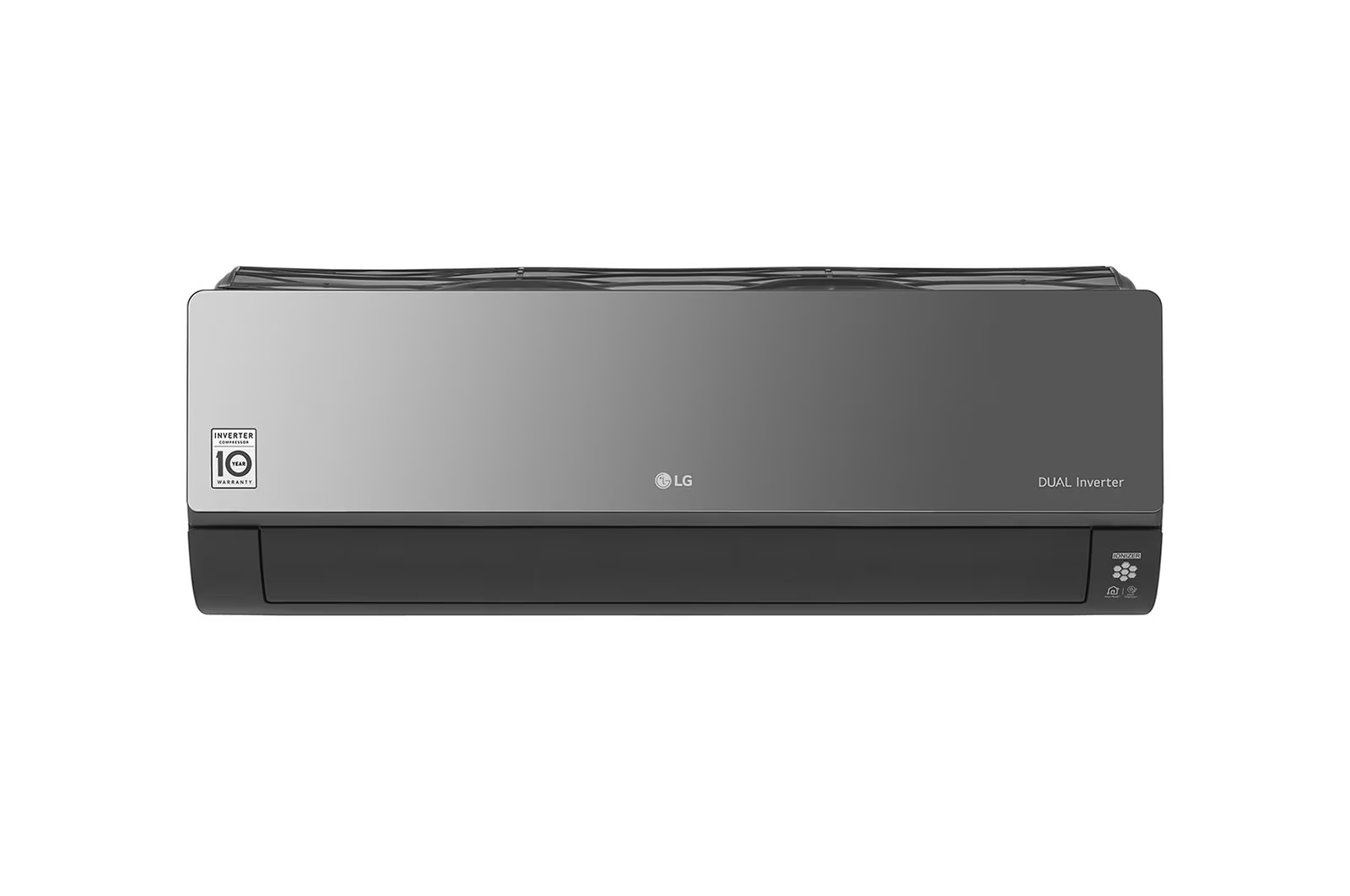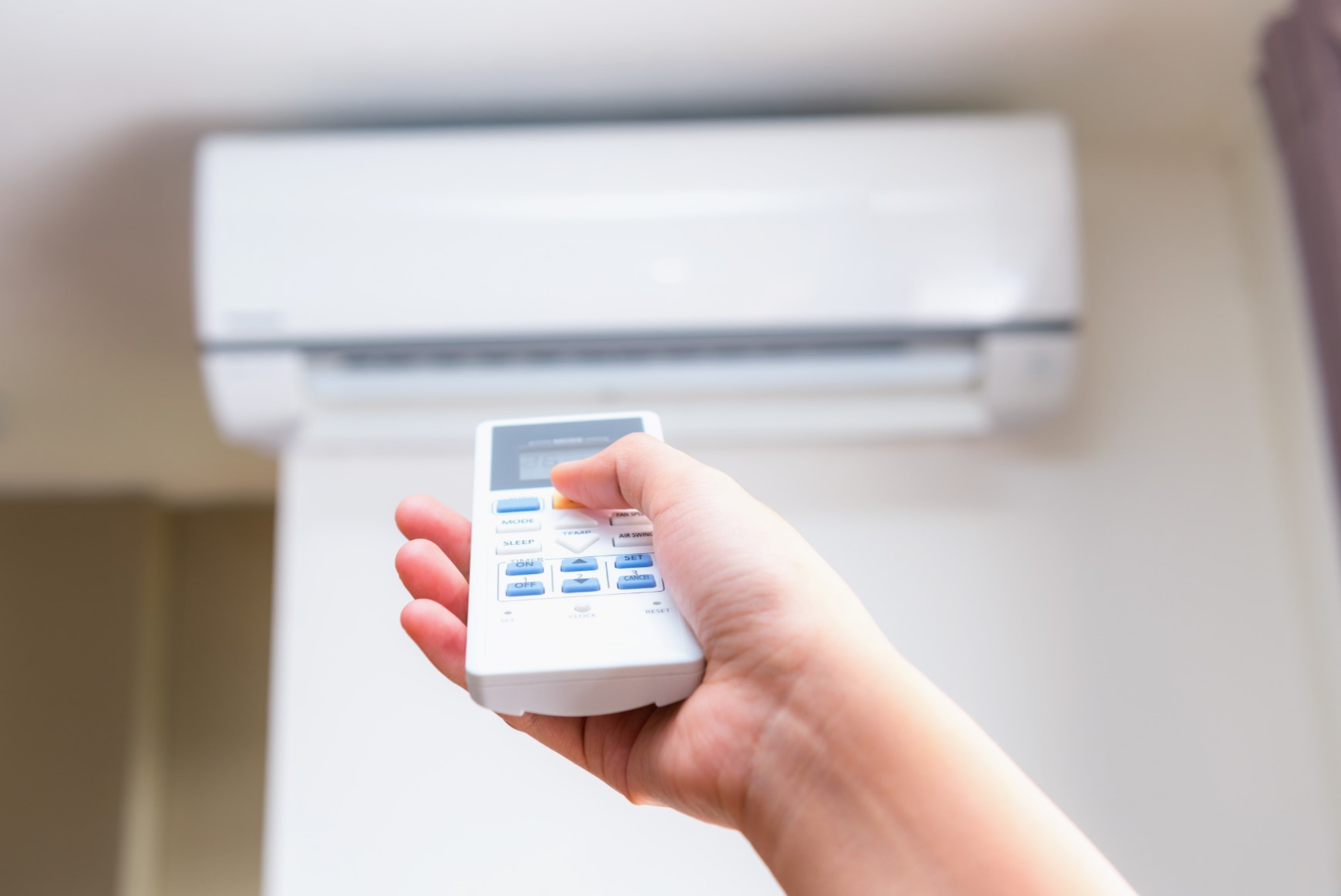Home>Home Maintenance>How To Recharge A Portable Air Conditioner
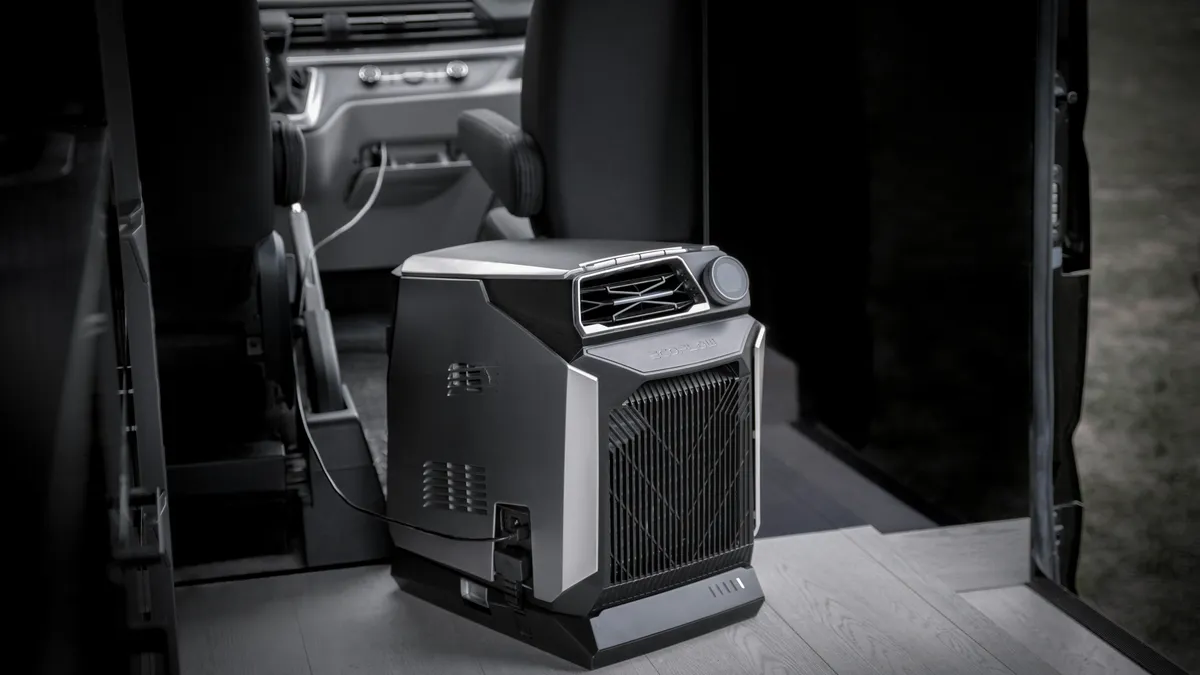

Home Maintenance
How To Recharge A Portable Air Conditioner
Modified: October 20, 2024
Learn how to recharge your portable air conditioner at home with these simple home maintenance tips. Keep your space cool and comfortable all summer long!
(Many of the links in this article redirect to a specific reviewed product. Your purchase of these products through affiliate links helps to generate commission for Storables.com, at no extra cost. Learn more)
Introduction
When the scorching heat of summer arrives, having a portable air conditioner becomes a lifesaver. These compact cooling units offer the flexibility to keep you cool in any room of your home without the need for installation or complicated ductwork. However, like any other appliance, portable air conditioners require regular maintenance to ensure optimal performance.
In this article, we will dive into the essentials of maintaining and recharging a portable air conditioner. Whether you are a first-time user or have been using a portable air conditioner for years, understanding these maintenance tips will help prolong the lifespan of your unit and keep it running smoothly when you need it most.
Key Takeaways:
- Regularly cleaning air filters and ensuring proper ventilation are key to maintaining a portable air conditioner’s performance and indoor air quality. Good airflow and a suitable power source are essential for efficient and safe operation.
- Leave refrigerant recharging to the professionals to ensure safety and optimal cooling performance. Troubleshoot common issues like insufficient cooling and excessive noise, but consult the manual or manufacturer for further assistance if problems persist.
Read more: How To Recharge A Window Air Conditioner
Understanding the Basics of a Portable Air Conditioner
Before delving into the maintenance of a portable air conditioner, it is crucial to have a basic understanding of how these units work. Unlike traditional central air conditioning systems, portable air conditioners do not require permanent installation or connection to external ducts.
Portable air conditioners function by extracting warm air from the room and cooling it down through a refrigeration cycle. They consist of a compressor, condenser, evaporator, and fan. The compressor pressurizes the refrigerant, which then flows to the condenser, where it releases heat. The cooled refrigerant then moves to the evaporator, where it absorbs heat from the room air. Finally, the fan blows out the cooled air back into the room.
One key component of a portable air conditioner is the exhaust hose, which is used to vent the hot air generated during the cooling process. This hose is designed to be connected to a window kit or a venting system, allowing the hot air to be expelled outside of the room.
Understanding these basic components and how they work together will help you better maintain your portable air conditioner and troubleshoot any issues that may arise.
Checking and Cleaning the Air Filters
The air filters in a portable air conditioner play a crucial role in maintaining its performance and efficiency. Over time, these filters can become clogged with dirt, dust, and other particles, hindering airflow and reducing cooling performance. To ensure optimal airflow and keep your portable air conditioner running smoothly, it is important to regularly check and clean the air filters.
Start by locating the air filters in your portable air conditioner. They are typically located behind a front or side panel, easily accessible for maintenance. Once you have located the filters, carefully remove them from the unit.
Next, inspect the filters for any visible dirt or debris. If they appear dirty or clogged, it’s time to give them a thorough cleaning. Depending on the type of filters, you can either vacuum them or rinse them with water. If vacuuming, use a soft brush attachment to gently remove the dirt. If rinsing, use lukewarm water and mild detergent to clean the filters, making sure to rinse them thoroughly and allow them to dry completely before reinstalling.
It is recommended to clean the air filters at least once a month or more frequently if you use the portable air conditioner in a dusty environment or have pets.
Regularly cleaning the air filters not only improves the performance of your portable air conditioner but also helps maintain good indoor air quality by removing dust, allergens, and pollutants from the air.
Ensuring Proper Ventilation
Proper ventilation is essential for the efficient operation of a portable air conditioner. Without proper ventilation, the hot air expelled during the cooling process can accumulate in the room, hindering the unit’s cooling performance and potentially causing overheating.
The first step in ensuring proper ventilation is to make sure the exhaust hose is properly connected and vented to the outside. This hose is designed to remove the hot air generated by the portable air conditioner and should be connected securely to a window kit or a venting system. If the hose is not properly connected or if there are any leaks, it can result in the recirculation of warm air, negating the cooling effects of the unit.
It is important to check the condition of the exhaust hose regularly. Look for any bends, kinks, or obstructions that may restrict airflow. If you notice any damage or blockages, replace or repair the hose accordingly.
In addition to the exhaust hose, ensure that the area around the portable air conditioner is clear of any obstructions. Avoid placing furniture or other objects in front of or around the unit, as this can impede the airflow and reduce the cooling efficiency.
Lastly, consider the overall ventilation of the room. Good airflow throughout the room can help distribute the cool air more effectively. You can achieve this by using ceiling fans or portable fans to circulate the air and eliminate any hot spots.
By ensuring proper ventilation, you can maximize the cooling capacity of your portable air conditioner and create a comfortable environment in any room.
To recharge a portable air conditioner, you will need to add refrigerant using a recharge kit. Make sure to follow the manufacturer’s instructions and use the correct type of refrigerant for your unit.
Determining the Correct Power Source
When using a portable air conditioner, it is essential to ensure that you have the correct power source to support its operation. Portable air conditioners typically require a standard electrical outlet with sufficient voltage and amperage.
Start by checking the power requirements specified by the manufacturer of your portable air conditioner. This information can usually be found in the user manual or on a label on the unit itself. Pay attention to the voltage and amperage requirements, as well as any specific instructions regarding the type of outlet or circuit needed.
Next, evaluate your current electrical setup. Make sure that the outlet you plan to use meets the requirements of the portable air conditioner. Check the voltage of the outlet and ensure that it matches the voltage requirement of the unit. Additionally, consider the amperage capacity of the circuit that the outlet is connected to. If the circuit is already heavily loaded with other appliances, it may not be able to accommodate the power needs of the portable air conditioner.
If your current electrical setup does not meet the requirements of the portable air conditioner, you may need to consider alternative options. This could include hiring a licensed electrician to install a dedicated circuit for the unit or using a power strip with surge protection that can handle the required voltage and amperage.
Using the correct power source is crucial not only for the proper functioning of the portable air conditioner but also for the safety of your home. Overloading electrical circuits can lead to tripped breakers or even electrical fires, so it is essential to ensure that your power source can handle the demand of the unit.
By determining the correct power source and ensuring it meets the requirements of your portable air conditioner, you can enjoy reliable and safe cooling without any power-related issues.
Read more: How To Recharge A Home Air Conditioner
Recharging the Portable Air Conditioner
Portable air conditioners work by using refrigerant to cool and dehumidify the air. Over time, the refrigerant levels in the unit may decrease, resulting in reduced cooling efficiency. If you notice that your portable air conditioner is not cooling as effectively as before, it may be time to recharge the refrigerant.
Recharging the refrigerant in a portable air conditioner is a job that should be left to a trained professional. It requires specialized equipment and knowledge of handling refrigerants safely. Attempting to recharge the unit yourself can not only damage the unit but also pose safety risks.
If you suspect that your portable air conditioner needs a refrigerant recharge, contact a licensed HVAC technician who has experience working with portable air conditioners. They will be able to assess the unit, check for any leaks, and determine if a recharge is necessary.
It’s important to note that recharging the refrigerant is not a regular maintenance task. The refrigerant in a properly functioning unit should last for many years without the need for recharging. If you find that your portable air conditioner requires frequent recharges, it may indicate a more significant problem, such as a refrigerant leak or a malfunctioning component, which should be addressed by a professional technician.
Remember, safety should always come first when dealing with refrigerants. Do not attempt to recharge the refrigerant in your portable air conditioner yourself. Instead, rely on the expertise of a qualified HVAC technician to ensure proper handling, minimize risks, and restore the optimal cooling performance of your unit.
Troubleshooting Common Issues
Even with proper maintenance, portable air conditioners can sometimes experience issues that hinder their performance. Here are some common problems you may encounter and steps you can take to troubleshoot them:
- Insufficient cooling: If your portable air conditioner is not cooling the room as effectively as it used to, check if the air filters are clean and free from debris. Clogged filters can restrict airflow and reduce cooling efficiency. Also, ensure that the exhaust hose is properly connected and vented to the outside. If the issue persists, it may indicate a refrigerant leak or a malfunctioning component, requiring professional attention.
- Excessive noise: Portable air conditioners can generate noise during their operation, but if you notice an unusual or excessive noise, it could indicate a problem. Check for loose or damaged parts and tighten or repair them if necessary. Ensure that the unit is installed on a level surface to avoid vibrations. If the noise persists, it’s best to have a technician examine the unit.
- Water leakage: Portable air conditioners produce condensation as they cool the air, which is typically drained through an internal system. If you notice water leakage, ensure that the unit is level and the drain pan is not overflowing. Clean any clogged drain holes or replace a faulty drain pipe. If the issue persists, it may require professional attention to assess and fix the problem.
- Frequent tripping of circuit breaker: If your portable air conditioner frequently trips the circuit breaker, it may be drawing too much power. Check the power requirements of the unit and make sure the circuit can handle the load. Avoid using other high-power appliances on the same circuit. If the problem continues, consult an electrician to evaluate the electrical setup and make any necessary adjustments.
- Remote control malfunction: If the remote control of your portable air conditioner is not working, check the batteries and replace them if necessary. Ensure there are no obstructions between the remote control and the unit. If the issue persists, try resetting the unit or contacting the manufacturer for further assistance.
If you encounter any other issues or the troubleshooting steps do not resolve the problem, it is best to consult the user manual or contact the manufacturer’s customer support for guidance. They can provide specific troubleshooting steps or arrange for a technician to inspect and repair the portable air conditioner if needed.
Conclusion
Proper maintenance of your portable air conditioner is essential to ensure optimal cooling performance and prolong its lifespan. By understanding the basics of how these units work and following a few maintenance steps, you can keep your portable air conditioner running efficiently throughout the summer months.
Regularly checking and cleaning the air filters helps maintain good air quality and prevents airflow blockages. Ensuring proper ventilation by properly connecting and maintaining the exhaust hose, as well as promoting good airflow in the room, maximizes the unit’s cooling capacity.
Determining the correct power source for your portable air conditioner and complying with its requirements is crucial for safe and reliable operation. When it comes to recharging the refrigerant, it is best to leave this task to trained professionals to ensure proper handling and safety.
If you encounter any issues with your portable air conditioner, troubleshooting common problems may help resolve the issue. However, if the problem persists or if you are unsure, it is recommended to consult the user manual or contact the manufacturer’s customer support for further assistance.
By diligently maintaining and caring for your portable air conditioner, you can enjoy cool and comfortable indoor spaces all summer long. Keep in mind that regular maintenance not only improves the unit’s performance but also extends its lifespan, ultimately saving you time and money in the long run.
Remember, a well-maintained portable air conditioner is a reliable companion during hot summer days, providing you with comfort and respite from the scorching heat.
Frequently Asked Questions about How To Recharge A Portable Air Conditioner
Was this page helpful?
At Storables.com, we guarantee accurate and reliable information. Our content, validated by Expert Board Contributors, is crafted following stringent Editorial Policies. We're committed to providing you with well-researched, expert-backed insights for all your informational needs.
